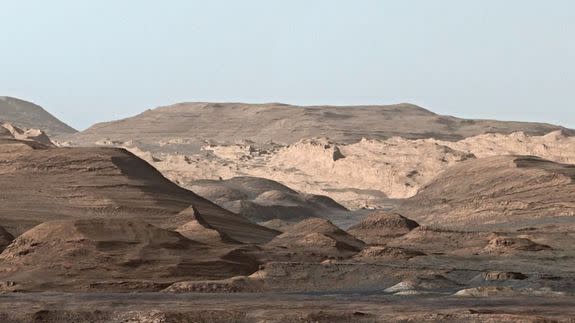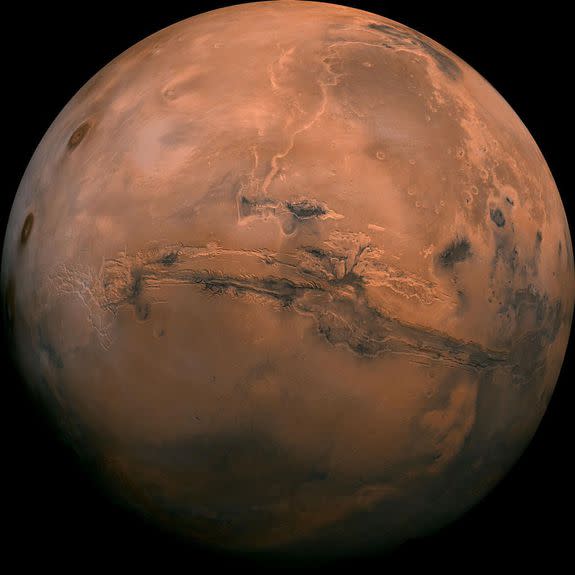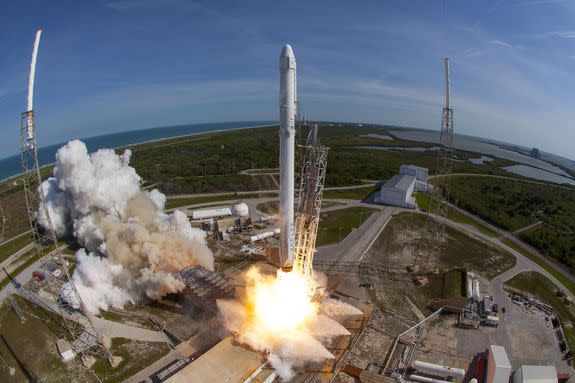Obama: We're going to Mars by 2030s

The U.S. government is partnering with private space companies to send humans to Mars by the 2030s, President Barack Obama announced on Tuesday.
In an op-ed for CNN, the president said the ultimate goal is for humans to eventually be able to remain on Mars for "an extended time."
Obama published the op-ed two days ahead of the White House Frontiers Conference in Pittsburgh. The president will host the Oct. 13 event, which will bring together America's top scientists, engineers, innovators and students to "dream up ways to build on our progress and find the next frontiers," Obama wrote.
SEE ALSO: Elon Musk: Is his Mars Shot impossible or inspired?
The op-ed also coincides with a joint announcement from the White House and NASA that builds on Obama's vision to make the human settlement of deep space a reality.
On Tuesday, John Holdren, who directs the White House Office of Science and Technology Policy, and NASA Administrator Charles Bolden co-authored a blog post explaining two new space initiatives. They said accomplishing the administration's Mars vision will require extensive public-private cooperation, and such initiatives are already moving forward.

Image: NASA
"For humanity to successfully and sustainably settle the 'final frontier,' we will need to take advantage of investment and innovation in both the public and private sectors," Holdren and Bolden wrote.
The first initiative involves habitation systems, or "habs," that could sustain and transport astronauts on long duration, deep-space missions — such as a mission to Mars. In August, NASA selected six private companies to produce ground prototypes of habitat modules through NASA's new Next Space Technologies for Exploration Partnerships, or NextSTEP, program.
These companies include Bigelow Aerospace of Las Vegas, Boeing and NanoRacks of Webster, Texas.
The second initiative aims to open up the International Space Station to private space companies, and eventually transfer the ISS to being a mainly private sector space outpost. This fall, NASA will start giving companies opportunities to add their own modules and other capabilties to the ISS.
"At NASA, we’ve worked hard over the past several years to develop a sustainable Mars exploration plan, and to build a coalition of international and private sector partners to support this vision," NASA spokeswoman Stephanie Schierholz told Mashable. "And we've made extraordinary progress implementing this plan."
NASA estimates its Mars mission will cost tens of billions of dollars to mount.

Schierholz said that Obama's op-ed largely emphasizes ideas and plans that NASA has already publicly discussed about the mission to Mars.
But the piece still highlights those details "for anyone who may not be following NASA closely, to make them aware of all the progress made and how plans are evolving," she said.
Obama's goal to send humans to the Red Planet within two decades also isn't new.
In 2010, NASA set targets of sending humans to an asteroid by 2025 and to Mars in the 2030s. The U.S. space agency said last year it was already developing the capabilities needed to make such journeys possible.
By the 2020s, NASA expects to "study landing and in-situ resource utilization" on Mars and "conduct a round-trip robotic sample return mission," Schierholz said.
Elon Musk, the billionaire entrepreneur and founder of SpaceX, has said the first passengers to Mars using his company's spacecraft could take off as soon as 2024 — so long as SpaceX can build the rocket and habitats needed to fling humans at least 33.9 million miles, or 54.6 million kilometers, from Earth to Mars.
Musk laid out his Mars vision in September during at talk at the International Astronautical Congress in Guadalajara, Mexico.
He estimated it would cost $10 billion to develop a rocket capable of taking humans to Mars. Each SpaceX vehicle would take 100 passengers on the Mars-bound journey, with trips planned every 26 months. Musk said tickets might cost $500,000 at first before declining steadily over time.

Image: NASA via Getty Images
Still, Musk admitted that SpaceX probably wouldn't accomplish this vision on its own. "Ultimately, this is going to be a huge public-private partnership," he said during the talk.
Obama, writing in the Tuesday op-ed, reflected on what it would mean for him to look up into space one day with his future grandchildren. He said one of his earliest memories is sitting on his grandfather's shoulders — years before man set foot on the moon — and waving a flag as U.S. astronauts returned to Hawaii.
"Someday, I hope to hoist my own grandchildren onto my shoulders," he wrote. "But instead of eagerly awaiting the return of our intrepid explorers, we'll know that because of the choices we make now, they've gone to space not just to visit, but to stay — and in doing so, to make our lives better here on Earth."
